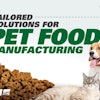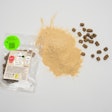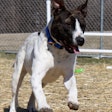
Fueling sled dogs as they race through 1,000 miles of frigid tundra taught Tim Hunt, DVM, key lessons in pet food formulation that he uses when making his eponymous brand, Dr. Tim’s Premium All-Natural Pet Food.
“My nutrition background stems from working with racing sled dogs which began in 1995,” Hunt told Petfood Industry. “Learning how these amazing athletes need to be fed in order to complete their events in prime shape has driven our company forward. We have learned how to assimilate the same logic of feeding those dogs down different activity levels. All the way from uber-athletes to couch potatoes.
"I see a diet as being a 100-piece orchestra, analogous to 100 percent of a diet," said Hunt. "Fiber composition, fat types and amounts, digestibility of ingredients, amount of ash, vitamins, low carbohydrate and being primarily composed with proteins of animal origin are all important pieces of this 'orchestra' of a diet. A highly active dog needs all the nutrients to fulfill a function, be relatively rapidly digestable and be palatable when the dog is tired. No one instrument is the key but all in unison make that song sound just right."
Iditarod sled dog champs ate experimental formula
The winner of this year’s Iditarod Trail dog sled race, Mitch Seavey, finished the track in record time at 8 days, 3 hours, 40 minutes and 13 seconds. Seavey fed his working canines Dr. Tim’s Fusion Ultra Athletic Formula, which was under testing at the time, supplemented with raw meat and fish. Other sled dog teams ate Dr. Tim’s Momentum dog food formulation.
“We are constantly looking at how to improve upon our diets and this year showed we could,” said Hunt. “The Iditarod has been won by teams feeding our food four of the last six years now.”
While humanization of pet food may be a trend in the Lower 48, on the sled dog trail, the dogs actually eat better than the humans, Hunt said. During the race, dog sled drivers, or mushers, must attend to the nutrition and water needs of their pets before themselves.
“We are lucky to get a few hours of sleep, and things are tough to eat when it is -30 or -40 Fahrenheit on the trail for we humans,” he said.
Differences between sled dogs and house dogs diets
During a competition, sled dogs devour 12-14,000 calories each day, Hunt said. That’s approximately six times what a house dog might consume. However, there’s a limit to the amount of food that the animal athletes can physically process.
“We need a highly calorically dense kibble that is very digestible with all the nutrients they need to compete at a high level,” he said. “It is one thing to run the race, it is a whole different beast to be competitive."
Huskies’ biological boost in competitions
Along with that energy-dense kibble, Alaskan Huskies may enjoy a biological advantage in endurance competitions, according to a study published in the journal PLoS ONE, which could shed light on Husky breed-specific and active-lifestyle dog food formulations.
Scientists studying Alaskan Huskies, both racing in the Iditarod and during the off-season, discovered that the dogs’ skeletal muscles have peak cellular respiration abilities that rival the highest capacities recorded in all mammals. This may boost Husky’s endurance and physical capacity.
Along with that, Huskies’ mitochondria (the cell’s power plants) appear to adapt to extreme exercise. While in the off-season, the researchers observed that the Huskies had high mitochondrial protein turnover rates, two to three times those of humans. However, the dogs’ bodies could somehow reduce that rate when burning more energy that they were consuming, such as during the extreme exertion of the Iditarod.
“All high protein turnover really means is that the dogs are making the muscle mitochondrial proteins at a faster rate than other species (like humans),” study co-author, Michael Davis, DVM, PhD, veterinary health professor at Oklahoma State University, told Petfood Industry, “but since at steady-state the proteins are not accumulating, then there must be a matching high rate of protein breakdown.”
That turnover wouldn’t necessarily change the dogs’ nutritional needs, he said, but it would influence their energy needs.
“However, while you can recover and recycle most of the amino acids as you build and break down protein, you do not recover the energy needed to assemble the protein,” Davis said. “So, high mitochondrial protein turnover is at least partially responsible for the higher body-mass-specific energy requirements of dogs, even when sedentary.”
L-carnitine amino acid supplement may benefit working dogs
For another boost to canine athletic performance, veterinary scientists published evidence that the amino acid L-carnitine may help working and athletic dogs to recover after intense exercise and improve performance while on the job.
"They should have asked me 13 years ago," said Hunt. "We have had L-carnitine in our foods since 2004...They [the dogs] can make their own during periods of stress, but I believe more [of it] may aid the dog in performance."
Published in the Journal of Nutritional Science, the study examined the effects of L-carnitine on lean mass and activity during exercise. At the conclusion of the research, Labrador Retrievers that were supplemented with L-carnitine showed improved exercise performance, as well as higher lean mass, improved muscle recovery, and less oxidative stress during strenuous exercise. Pet food ingredient supplier Lonza sponsored the research, which was conducted at Four Rivers Kennel LLC, in Walker, Missouri, USA.
Supplements, nutrition and training all come together to help canine athletes and working dogs perform their best and stay healthy, but ultimately, it's humans who must make healthy choices for the dogs.
"I see many an active dog owner try to use a food meant for a different lifestyle than the food was initially designed to be used for and see it fail in many aspects, much like fitting a round peg in a square hole," said Hunt. "Use a food that is meant for that specific lifestyle and the success they are looking for from the diet fed may just happen. The dogs' performance will speak volumes on the food's formulation, ingredient quality and manufacturing process."
Read more:
Specialty trend: probiotics, prebiotics in pet food, www.PetfoodIndustry.com/articles/6053



















